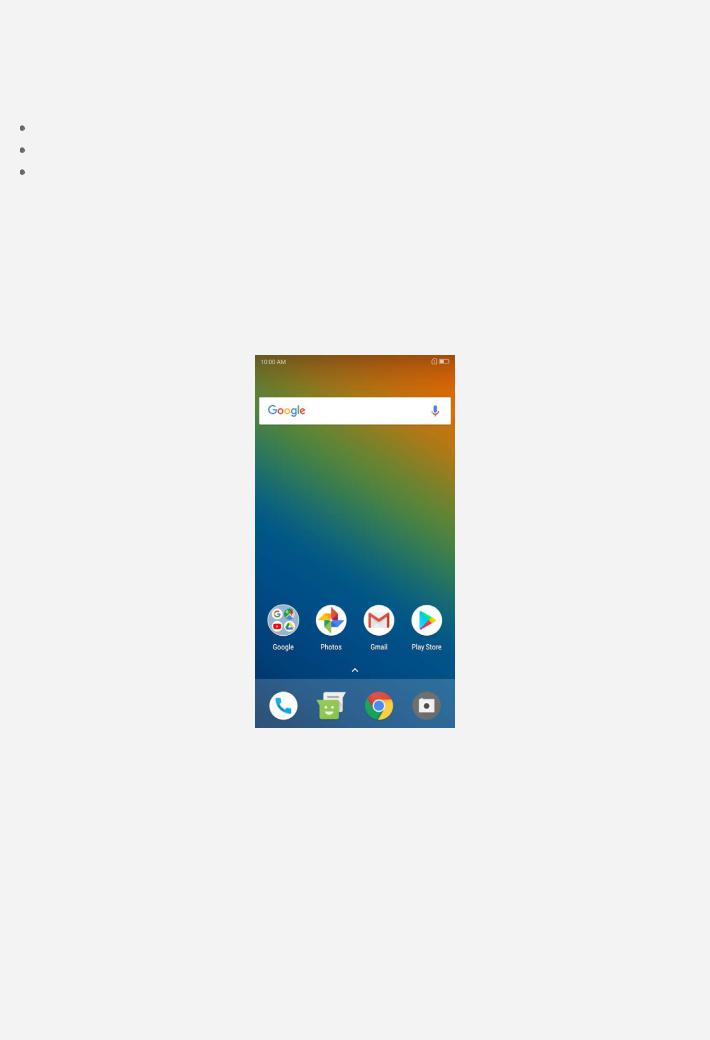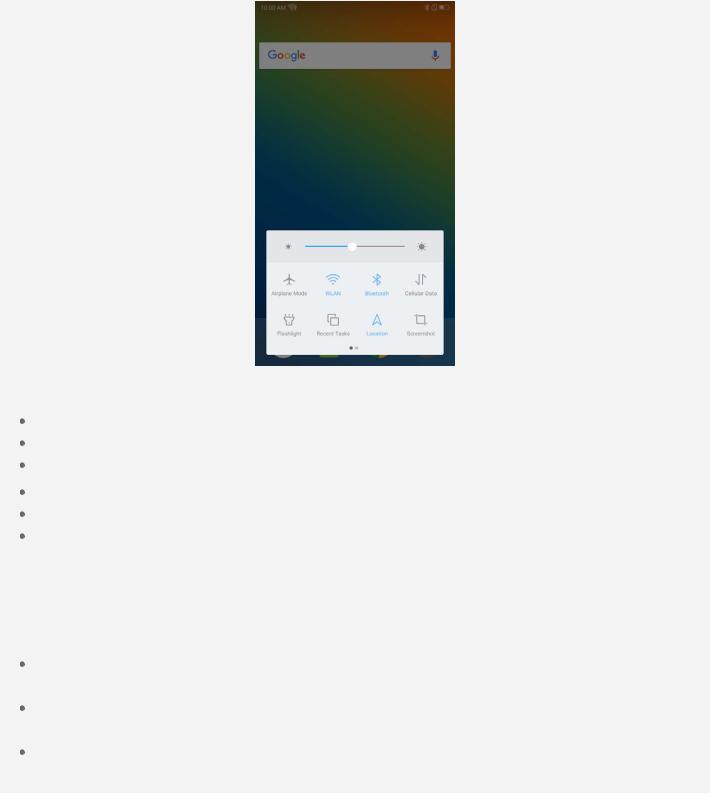Lenovo K9 Note User Manual

Lenovo K9 Note
User Guide V1.0
Lenovo L38012

 Basics
Basics
Before using this information and the product it supports, be sure to read the following:
Quick Start Guide
Regulatory Notice
Appendix
The Quick Start Guide and the Regulatory Notice have been uploaded to the website at http://support.lenovo.com.
Note: All pictures and illustrations in this document are for your reference only and may differ from the final product.
Home screen
The home screen is the starting point for using your phone. For your convenience, the home screen is already set up with some useful apps and widgets.
Note: Your phone's features and the home screen may be different depending on your location, language, carrier, and model.
Customizing home screens in edit mode
Press and hold anywhere on the home screen except the icons to enter edit mode.

In edit mode, you can do any of the following:
To move a home screen, press and hold a screen thumbnail until it enlarges slightly, drag it to the new location, and then release it.
To add a widget to the home screen, tap WIDGETS, swipe up or down to locate the widget that you want, press and hold the widget until it pops out, drag it to where you want to place it, and then release it.
Tip: Some widgets are grouped by app, swipe left or right to locate the app that you want and then tap it to see the available widgets.
To change the wallpaper, tap WALLPAPERS, locate the wallpaper that you want, and then tap it to set wallpapers.
Managing widgets and apps
Whether your home screen is in edit mode or not, you can do any of the following:
To move a widget or an app, press and hold the widget or app until its icon enlarges slightly, drag it to where you want to place it, and then release it.
To create an app folder, press and hold an app until its icon enlarges slightly, and then drag it onto another app.
To remove a widget from the home screen, press and hold the widget until its icon enlarges slightly, slide your finger toward the top of the screen, and then drop the widget over  .
.
To uninstall an app, press and hold the app, slide your finger toward the top of the screen, and then drop the app over  .
.
Note: System apps cannot be uninstalled. When you are trying to uninstall a system app,  does not appear at the top of the screen.
does not appear at the top of the screen.
Screen buttons
There are three buttons on your phone.
Home button: Tap |
to return to the default home screen. |
Back button: Tap |
to return to the previous page or exit the current app. |
Recent button: Tap |
to see recent apps. Then you can do the following: |
Tap an app to open it.

Tap  to stop running the app.
to stop running the app.
Tap  to stop running all the apps except the locked ones.
to stop running all the apps except the locked ones.
In app interface, press and hold  to enter split screen mode.
to enter split screen mode.
Note: Some apps do not support split screen.
Screen lock
When your phone is on, press the Power button to lock the screen manually. Press the Power button again to display the lock screen, and then swipe up from the bottom of the screen to unlock.
Note: Swipe is the default screen unlocking method. To change your screen lock, see Settings.
Notifications and Quick Settings
The Notifications panel (see Figure 1: Notifications) informs you of missed calls, new messages, and activities in progress such as file downloading. The Quick Settings panel (see Figure 2: Quick Settings) allows you to access frequently-used settings such as the WLAN switch.
Figure 1: Notifications

Figure 2: Quick Settings
You can do any of the following:
To see notifications, swipe down from the top of the screen.
To close the Notifications panel, swipe up from the bottom of the screen.
To dismiss a notifications, swipe left across the notifications.
To dismiss all notifications, tap  at the bottom of the Notifications panel.
at the bottom of the Notifications panel.
To open the Quick Settings panel, swipe up from the buttom of the screen.
To close the Quick Settings panel, swipe down from the top of the Quick Settings panel.
USB connection
When you connect your phone to a computer using a USB cable, the Notifications panel displays a notification such as "USB charging this device". You can tap the notification, and then select one of the following options:
Transfer files: Select this mode if you want to transfer any files between your phone and the computer.
Transfer photos (PTP): Select this mode if you want to transfer only photos and videos between your phone and the computer.
Charging this device: Select this mode if you want to charge your phone only.

 Calls
Calls
Making a call
Dialing a number manually
1.Open the Phone app.
2.Tap  to display the dialpad if necessary.
to display the dialpad if necessary.
3.Enter the phone number that you want to dial, and then tap  .
.
Calling from the call log
1.Open the Phone app.
2.Tap the  .
.
3.Tap a call log entry to make a call.
Calling a contact
1.Open the Phone app.
2.Tap the  .
.
3.Locate the contact that you want to call, and tap the contact name to display the contact details.
4.Tap the phone number that you want to dial.
Receiving calls
Answering or rejecting a call
When you receive a phone call, the incoming call screen appears. You can do one of the following:
Swipe up  to answer the call. Swipe down
to answer the call. Swipe down to reject the call.
to reject the call.
Silencing a call
You have the following ways to silence a call:
Press the volume up button or the volume down button.
Press the Power button.
Options during a call
When you are on a call, the following options are available on the screen:
Add call: displays the dialpad so you can call another person.
Hold/Unhold: puts the current call on hold or resumes the call.
Mute: turns the microphone on or off.
Dialpad/Hide: displays or hides the keypad.
Speaker: turns the speaker on or off.
 : ends the call.
: ends the call.
You can also press the volume button to turn the volume up or down.
Using the call log
The call log contains missed, outgoing, and received call entries. You can tap a call log, and then tap an option from the option menu. For example, you can tap the Add to contact option
